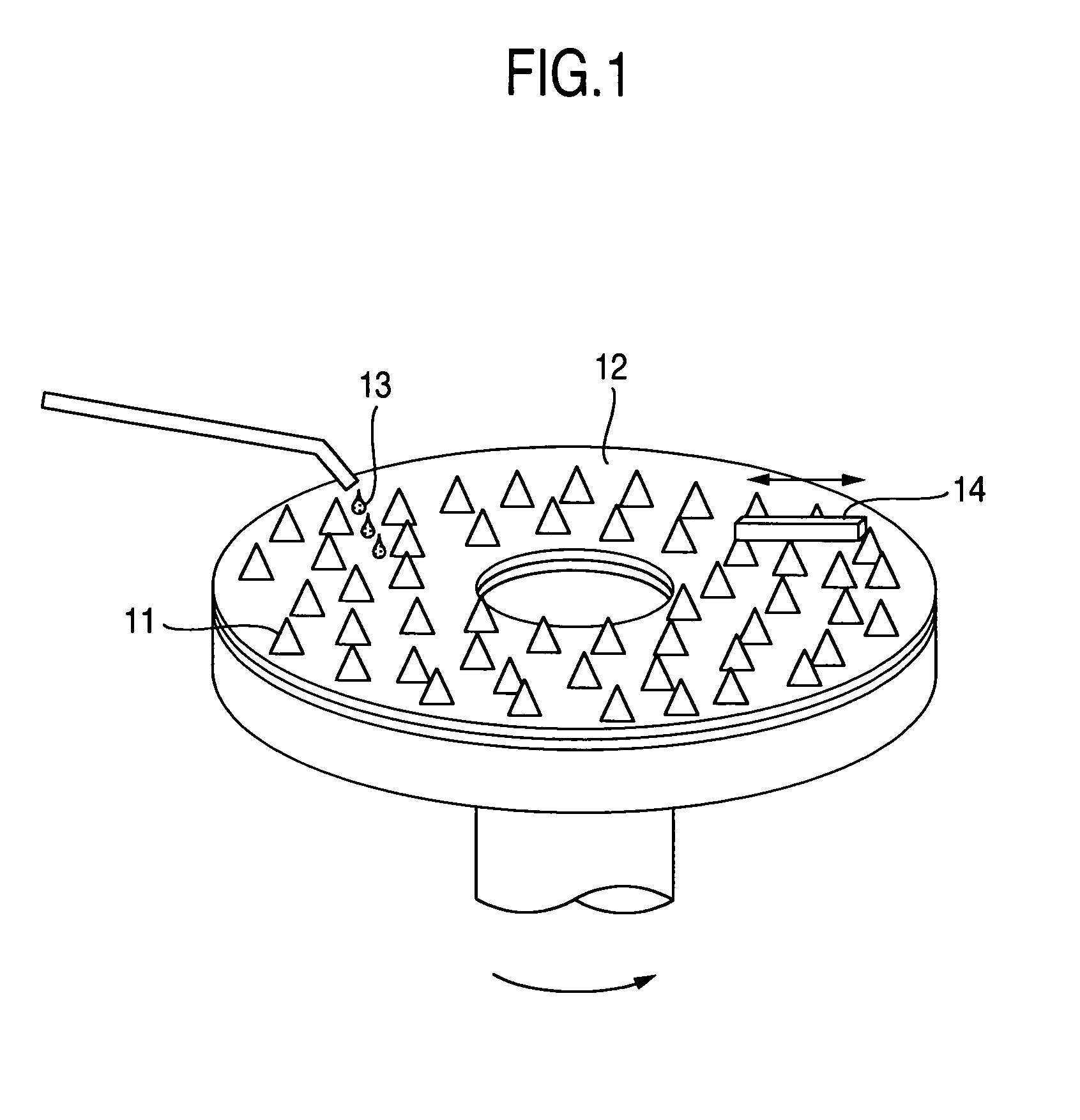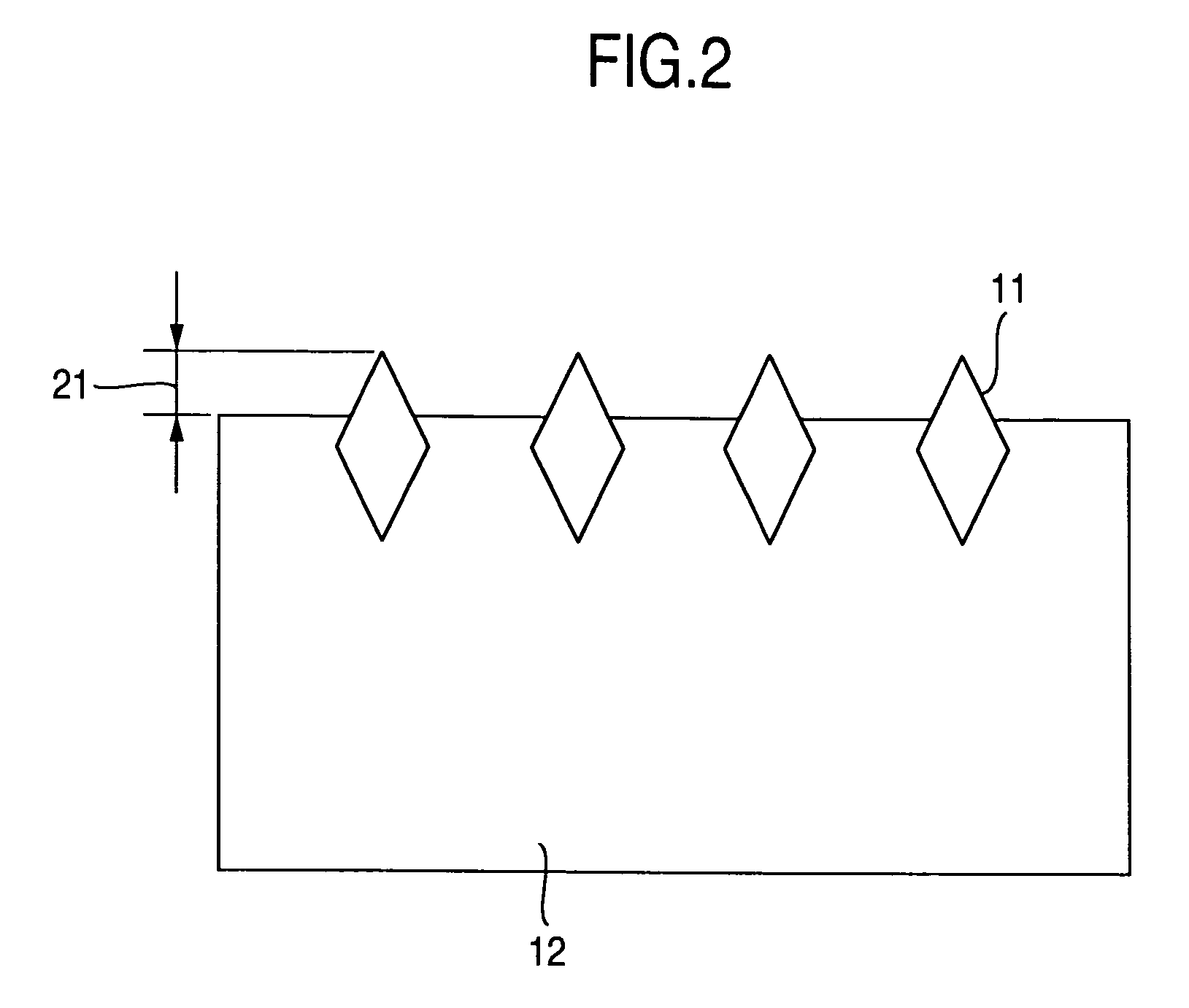Lapping tool and method for manufacturing the same
a technology of manufacturing tool and lapping tool, which is applied in the direction of manufacturing tools, grinding devices, other chemical processes, etc., can solve the problems of difficult to use the technique described above to perform uniform lapping, abrasive grains are gripped on a surface plate, and the effect of improving the lapping efficiency
- Summary
- Abstract
- Description
- Claims
- Application Information
AI Technical Summary
Benefits of technology
Problems solved by technology
Method used
Image
Examples
Embodiment Construction
[0041]Embodiments of the invention will be described in detail with reference to the drawings.
[0042]FIG. 4 is a flowchart of a method of forming a lapping tool. Specifically, a tin soft surface plate 41 having a 15 inch size (about 380 mm) was prepared and a diamond bite was used to cut a surface (referred below to as tin surface) of a tin material to perform shape correction. For a diamond bite used in correction, one having a tip end diameter of 4 mmR was used and roughness of the tin surface was made 100 nm Rmax or less. Further, in order to planarize the roughness of the whole tin surface, a lapping cloth (Supreme) manufactured by Rodel-Nitta Ltd. and a lapping slurry having alumina grains of 50 nm in average abrasive grain size dispersed in an oil were used to perform a planarization 42 to provide for an average surface roughness of 10 nm Ra, and then a washing treatment was performed.
[0043]Subsequently, the surface plate surface 41 was subjected to a treatment, in which diamon...
PUM
| Property | Measurement | Unit |
|---|---|---|
| size | aaaaa | aaaaa |
| bias potential | aaaaa | aaaaa |
| thickness | aaaaa | aaaaa |
Abstract
Description
Claims
Application Information
 Login to View More
Login to View More - R&D
- Intellectual Property
- Life Sciences
- Materials
- Tech Scout
- Unparalleled Data Quality
- Higher Quality Content
- 60% Fewer Hallucinations
Browse by: Latest US Patents, China's latest patents, Technical Efficacy Thesaurus, Application Domain, Technology Topic, Popular Technical Reports.
© 2025 PatSnap. All rights reserved.Legal|Privacy policy|Modern Slavery Act Transparency Statement|Sitemap|About US| Contact US: help@patsnap.com



